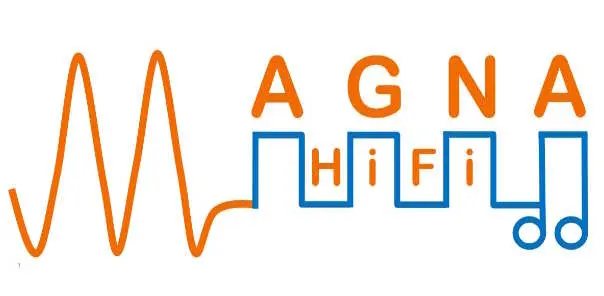If that headline makes your head spin, don’t worry, you’re not alone.
DSD, DoP, PCM… these are the buzzwords of high-end digital audio, and they often appear in the same sentence or in heated forum debates. But what do they actually mean, and why do people care so much? Let’s unravel the mystery.
A Bit of History: The Birth of DSD
 The story of DSD starts back in the 1990s, when Sony and Philips, the same duo behind the Compact Disc, wanted to create a next-generation audio format that would surpass CD quality.
The story of DSD starts back in the 1990s, when Sony and Philips, the same duo behind the Compact Disc, wanted to create a next-generation audio format that would surpass CD quality.
Their goal was to deliver sound closer to analog tape or vinyl, but with the convenience of digital. The result was the Super Audio CD (SACD), launched in 1999, which used a brand-new encoding method called Direct Stream Digital (DSD).
Each SACD stored music as a 1-bit signal sampled at 2.8224 MHz, instead of the 16-bit/44.1 kHz PCM used on CDs. The higher sampling rate allowed for extremely fine timing accuracy and many listeners felt it offered a smoother, more natural sound.
Even though SACD never became a mainstream format, DSD lived on. Today, it’s used in high-resolution downloads and network players, long after the physical discs faded away.
Holo Audio’s high-end DACs (Cyan2, Spring3 and May) and the Digital to Digtal Converter (Red) support DSD1024, which corresponds to an ultra-high sampling rate of 45.1584 MHz, delivering exceptional detail and smoothness in audio playback.
DSD1024 is therefore 1024 times the standard CD sample rate of 44.1 kHz, an enormous data rate!
What Is DSD, Really?
 DSD stands for Direct Stream Digital, and it’s not your typical digital audio format. Instead of storing audio as a bunch of detailed numbers like PCM does, DSD uses a 1-bit signal that switches insanely fast over 2.8 million times per second for standard DSD64.
DSD stands for Direct Stream Digital, and it’s not your typical digital audio format. Instead of storing audio as a bunch of detailed numbers like PCM does, DSD uses a 1-bit signal that switches insanely fast over 2.8 million times per second for standard DSD64.
That single bit simply tells whether the sound wave is moving up or down at each instant. When you play it back, your DAC reconstructs a smooth analog-like waveform. The result? Some listeners describe it as warmer, smoother, and more “natural”.
In short:
- DSD = 1 bit, ultra-fast sampling
- PCM = multi-bit, slower but detailed sampling
So… What Is DoP?
 Now, here’s where it gets confusing.
Now, here’s where it gets confusing.
DoP stands for DSD Over PCM, and despite how it sounds, it doesn’t actually convert DSD into PCM. It’s just a clever trick.
Originally, the S/PDIF interface (Common standard long before USB or I2S over HDMI were widely used for Audio) was not designed to carry DSD signals directly. Because S/PDIF was built around PCM data transmission, sending pure DSD streams over it posed technical challenges and compatibility issues. To encourage wider adoption of DSD without requiring entirely new hardware, the audio community developed DoP (DSD over PCM), a clever method that packages DSD data inside a standard PCM stream.
DoP wraps the original DSD data inside a PCM container, allowing DSD to travel through normal PCM-compatible connections (like USB or SPDIF). Once it reaches the DAC, the DAC unwraps it and plays the native DSD stream.
So:
- DSD Native: The pure 1-bit signal sent directly to the DAC
- DSD DoP: The same DSD data, hidden inside a PCM “envelope” for compatibility
Sound quality? Identical. Only the transport method changes.
PCM vs. DSD: Two Different Philosophies
 PCM (Pulse Code Modulation) is the format behind nearly all digital audio, from CDs to FLAC to streaming. It stores samples as multi-bit values (like 16- or 24-bit) at fixed intervals (44.1 kHz, 96 kHz, etc.). It’s precise, easy to edit, and well supported.
PCM (Pulse Code Modulation) is the format behind nearly all digital audio, from CDs to FLAC to streaming. It stores samples as multi-bit values (like 16- or 24-bit) at fixed intervals (44.1 kHz, 96 kHz, etc.). It’s precise, easy to edit, and well supported.
DSD, on the other hand, is almost the opposite approach, simplicity at the bit level, speed over complexity.
| Feature | PCM | DSD |
| Bit depth | 16–24 bits | 1 bit |
| Sample rate | 44.1–384 kHz | 2.8–11.2 MHz |
| File types | WAV, FLAC, AIFF | DSF, DFF |
| Editing | Easy | Difficult (requires conversion) |
Both can sound stunning when done right, the rest is down to your DAC, your ears, and maybe your imagination.
Final Thoughts
DSD and PCM represent two different ways of thinking about how digital sound is captured and reproduced. One focuses on precision, the other on speed and simplicity.
And DoP? It’s the bridge that lets them coexist, a technical workaround that turned into an audiophile talking point.
So next time someone tells you they prefer “DSD Native over DoP,” you can smile and say:
“You realize it’s the same data, right?”
